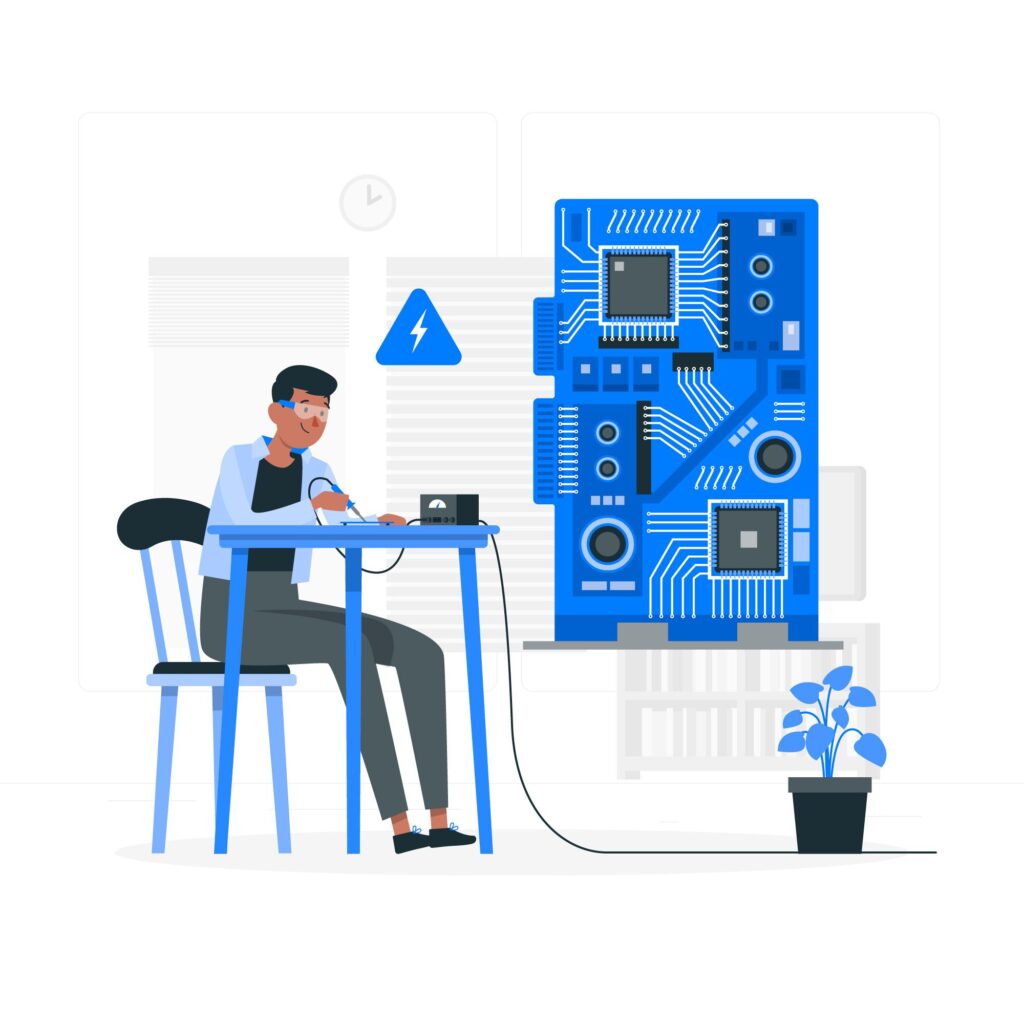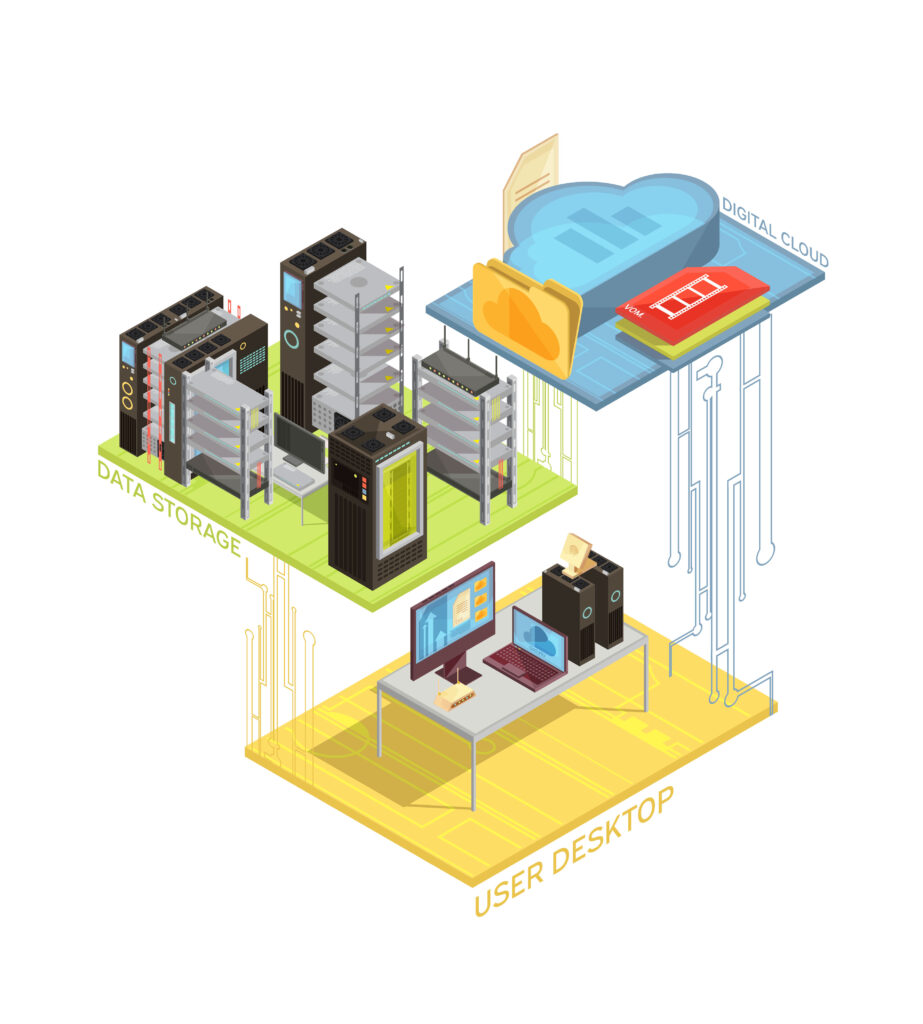The establishment of firmware is crucially linked to the functioning of electronics. It is a transfer point between hardware and software, where electronics can fluently perform their intended functions. Understanding firmware development is very important for any person involved in hardware design, software engineering, or product development. This blog post explains the essentials one should know about firmware development, its importance, the development process, and the best practices to be followed.
The following article uncovers what embedded firmware is, the role of this firmware in the development and performance of an embedded system, the type of embedded firmware, which project it fits in, and the process of firmware development in different embedded solutions across various industries.
What is firmware development?
Firmware is a type of specialized software that has been programmed onto some device’s non-volatile memory. It could give low-level control to the specific hardware for some devices. Because firmware is usually tightly implemented with the hardware, it must operate efficiently within constraints. Some common examples of such devices that use firmware include embedded systems, consumer electronics, industrial machines, and much more.
The role of firmware in embedded development
The primary role of firmware in embedded systems is to tell the hardware when to start operating, communicate with other devices, and execute specific tasks. Depending on the type of firmware and functionality integrated, its features can be extended and updated once it is implemented into an embedded system. Now, we are going to discover the main types of firmware for embedded systems, which will help choose the one that is best suited to your projects.
Understanding Firmware Levels
Firmware exists at various levels, each of which is tailored to the different needs of the system. Selecting the appropriate one depends on your system’s requirements, complexity, and desired functionalities. Here’s a quick breakdown:
- Low-Level Firmware
This is the most basic type of embedded software. It is integrated into the system via ROM chips and is designed to handle basic tasks. Once implemented, it is fixed-meaning it cannot be reconfigured or updated.
- High-Level Firmware
Higher than low-level firmware, it performs more complicated tasks, like control of the devices and interaction with hardware units. Built into the flash memory chip, the high-level firmware is updatable to meet a need for higher flexibility.
- Subsystem Firmware
Subsystem refers to that particular part of an embedded system designed to execute a more complicated set of tasks. Subsystems, like high-level firmware, are updatable; therefore, they are useful in dynamic or ever-changing needs.
You should select the firmware based on your project’s initial requirements and the specific requirements of your embedded system. Stay tuned for more insights into the phases of firmware development and the significant engineering decisions made during each stage.

Importance of Firmware
Firmware is a component of any hardware device, as it acts as the first layer of software that directly interfaces with the hardware. It initiates and manages the hardware resources and enables higher-level software applications to run on the device. Most electronic devices would not work without firmware.
Here are some reasons why firmware is important:
- Device Control: Firmware controls the basic operations of the hardware, such as booting up, managing input/output operations, and controlling device-specific features.
- Performance Optimization: The right firmware ensures that the hardware works at its peak. It enables the hardware to deliver a smooth and responsive user experience by efficiently managing the system’s resources—such as memory, processing power, and energy consumption. This optimization improves not only device performance but also reliability and efficiency.
- Security: Firmware is what keeps the device and user data safe. Some of the essential security features might include encryption, authentication protocols, and secure boot mechanisms that help to protect the access of unauthorized devices and vulnerabilities. Acting as the first line of defense, firmware will protect the integrity of the device and ensure its safe running in any environment.
- Upgrades and Maintenance: Firmware can be upgraded for fixing bugs, patching security vulnerabilities, and adding new features to a longer device life and usability.
Firmware Development Process
Whether you’re building firmware from scratch or enhancing the functionality of an existing solution, the first step is to find a reliable tech partner with proven expertise in firmware development.
With so many engineering companies in the market, it can be overwhelming to decide. To make the right choice, start by researching their portfolio. Look at their previous clients and the projects they’ve delivered—this is a quick and effective way to assess their capabilities and services.
While companies have different paths to success in developing firmware, every process must include several important steps. Let’s examine these steps to ensure success in your project.
- Requirement Analysis
The hardware specifications and functionality that the firmware needs to provide should be well understood before beginning development. It requires close cooperation with hardware engineers and product designers in gathering detailed requirements.
- Firmware architecture design
This is the firmware architecture design stage, which lets engineers build a scheme for future solutions, including the required tech stack and other services integration, to gain insight into how the expected functionality will work. The architecture design shows all the connections within the system, the roles of each feature, used services, communication protocols, and other technical details.
- Firmware Design Implementation
This is where the actual engineering work starts. Here, firmware engineers implement all functionalities defined in the firmware architecture to bring the design to life. They use programming languages and tools suited to the requirements of the project and the specific platform on which the firmware will run.
- Testing and Debugging
Testing and debugging ensure that the firmware meets the requirements of the project and works without errors. This is the best phase to identify and correct any issues, optimize performance, and prepare the firmware for device integration and mass production.
Once the testing phase is completed, developers develop a detailed documentation of the firmware code, architecture design, test cases, and other essential project information. Proper documentation makes maintenance much easier, even if the project is transferred to a new engineering team.
- Documentation
Proper documentation will help in the future maintenance and updating of the code. This should include documentation of the code, design decisions, and usage instructions.
- Deployment
The firmware is deployed on the device after extensive testing. It may include flashing the firmware on the memory of the device and final testing to ensure that everything works correctly.
- Post-Launch Maintenance
After integrating the firmware into your system, ongoing support and maintenance are crucial. This step ensures the system remains stable, errors are resolved, and regular updates or new features can be added as needed. Feedback from users can also play a valuable role in identifying areas for improvement, helping you address any weaknesses, and enhancing the overall solution.

Key Components of Firmware Architecture
Firmware is what supports the very basic operations in embedded systems and helps devices operate at their intended capabilities. The firmware architecture is simply how complex a task is and depends on how many tasks it is required to accomplish. The important parts of the firmware architecture, as shown below, play various roles in allowing the system to operate efficiently:
- Operating System (OS)
The operating system is embedded within the firmware. It acts as the basis for the entire system. It can allocate resources to hardware and software, schedule tasks, manage interactions between devices, and oversee memory and device drivers. This will ensure that the system operates stably and efficiently.
- Kernel
The kernel is the heart of the system’s operation, facilitating communication between hardware and software. It manages resource allocation, optimizes system performance, and ensures reliability, security, and seamless operation.
- Device Drivers
Device drivers help bridge the gap between the operating system and hardware. They translate system instructions that can be acted upon by hardware components into actions. In other words, device drivers enable the operating system to communicate effectively with hardware to perform certain operations.
- Bootloader
The bootloader is the first firmware to run on any device when it boots up. It ensures that the system launches correctly and loads the appropriate software. Besides that, it helps in firmware updating, making it a critical element for the maintenance of a system.
- Application Code
The code application layer describes the specific applications that define functionality on the device, in which all business logic execution is performed that would allow it to perform whatever intended operations.
Through this and much more, you realize the importance and ways firmware architecture serves in the facilitation of operation within embedded systems.
Challenges in Firmware Development
Developing firmware poses its fair share of problems. Here are two major headaches that developers run into:
- Hardware constraints: The memory and processing power are usually limited, so developers need to write very efficient, optimized code and must be careful with resource management. Balancing functionality with these constraints is not an easy task.
- Complexity of Debugging: Debugging firmware is very tricky because embedded systems are somewhat not visible internally. In addition, the tools for debugging in these environments normally have far less advancement than other tools used in software development, making the debugging process very complex.
- Real-Time Requirements: Most embedded systems demand real-time operation, so timing and resource management have to be taken with much care.
- Security Vulnerabilities: Firmware is also the attack target in many instances. Hence, security has to be ensured throughout the development process.
- Interdisciplinary Knowledge: A firmware developer should understand hardware as well as software and require diverse skill sets with continuous learning.
Conclusion
Firmware development is quite complex, yet an indispensable element of the latest technology. The functionality and performance of an endless number of gadgets depend on this. So understanding the concept, the development process and the best practices while developing firmware would be critical to any participant involved in making electronic products. Properly followed guidelines and the implementation of best practices ensure developers have created effective, secure, and reliable firmware that can boost the life expectancy of a gadget and enhance its user experience.
We are available to assist you whether you need specialized technical consultation or additional engineering support for your project. Reach out to our team, and we will make an effort to understand your requirements and plan together so that the goals are clearly defined and an effective action plan is developed.

